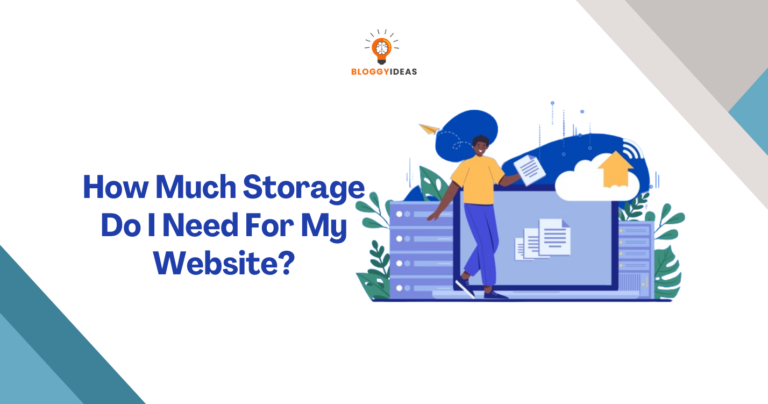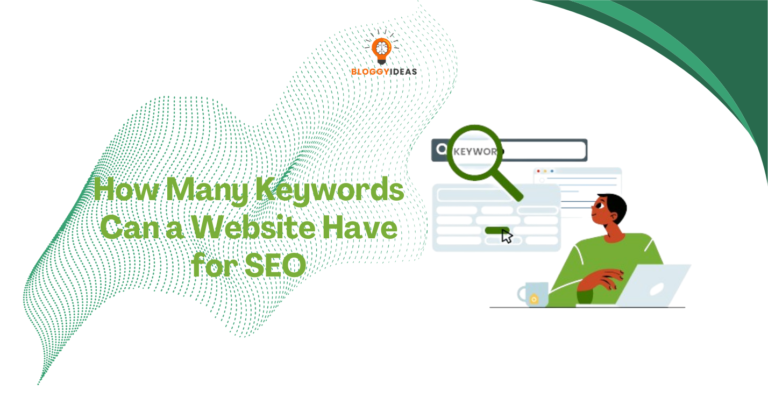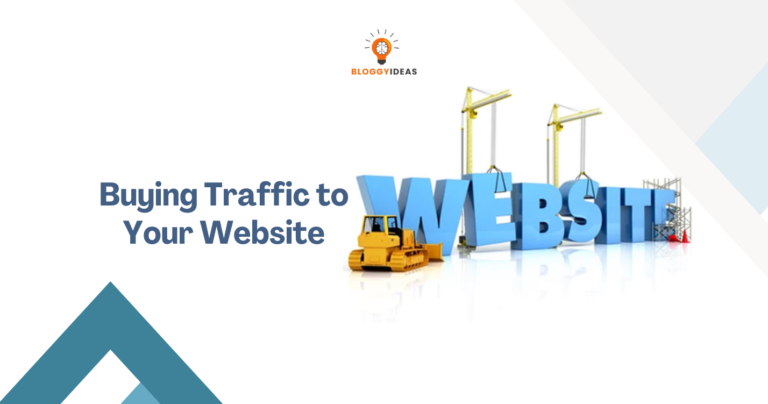Explore 17 Top Technical Requirements for Your eCommerce Websites
“Quick Overview” Many people commonly assume that creating an eCommerce website simply involves selecting an appealing design, showcasing products, and overseeing inventory. However, the technical demands of eCommerce extend far beyond these surface-level aspects.
An eCommerce website entails numerous technical requirements crucial for delivering a superior user experience. Surprisingly, 88% of consumers are less inclined to revisit a site with subpar user experience.
Considering this statistical insight, it becomes evident why it’s imperative to prioritize these technical requirements for eCommerce websites.
With that said, let’s delve into the essential technical prerequisites for an online shopping system.
Best Practices for eCommerce Website Requirements: 17 Guidelines to Follow
1. Secure Web Hosting
- Why Is It Necessary?
Simply buying a domain name and launching a website online is insufficient in today’s digital landscape.
Fast, stable, and reliable web hosting is crucial to safeguard your website from malicious software and unauthorized access. Without proper hosting on a secure server, your site is vulnerable to potential threats.
- What Are the Essential Requirements?
Selecting a web hosting package largely hinges on your eCommerce hosting needs. Nevertheless, certain elements remain essential regardless of your chosen web host.
Your web hosting package and the infrastructure provided by hosting providers must prioritize security and reliability to fend off hackers, malware, and spam. A TLS/SSL certificate is imperative, as it ensures data security, verifies your website’s ownership, and deters unauthorized replication of your site.
Additionally, attention must be paid to web hosting speed for optimal website performance. Speed directly influences user experience and can significantly impact your site’s success. It’s advisable to conduct a trial to assess the website’s turnaround time.
In addition to security and speed, features such as FTP access, ample bandwidth, high uptime, site backup capabilities, and responsive customer support are highly desirable in hosting services.
- What Are the Benefits?
| Security | Speed |
| Restricts unauthorized access | Helps with improving website speed |
| Detects and removes malicious software | Improves customer experience |
| Ensures hardware protection | Higher conversion rates |
2. User-Friendly Interface
- Why Is It Necessary?
A website that is easy for users to navigate is crucial for boosting engagement and conversion rates. According to a study conducted by Harmon, 97% of customers prioritize ease of use. When your website layout is interactive and user-friendly, visitors are inclined to spend more time on it, resulting in increased sales.
- What Are the Essential Requirements?
To ensure that your website is user-friendly, it’s crucial to focus not only on its visual appeal but also on its responsiveness, efficiency, and accessibility. This involves streamlining unnecessary components and features to facilitate easy navigation.
- 42% of visitors leave a site due to poor functionality.
- 22% are initially drawn in by visually appealing colors.
- 21% of users exit a website because of overly extravagant color schemes.
Opt for a minimalist design that is aesthetically pleasing while prioritizing clear visibility of content and features. Additionally, strive to minimize potential design and content errors to enhance the overall user experience.
- What Are the Benefits?
- Captivating appeal to your target audience
- Fostering brand loyalty
- Enhancing user experience
3. Mobile-friendly
- Why Is It Necessary?
Today, smartphones have become indispensable tools for people worldwide. Once considered a luxury, they are now a necessity for various tasks such as listening to music, staying connected with others, managing work emails, and accessing online information with just a tap.
In 2021, mobile devices accounted for 54.4% of website traffic, highlighting the significant shift towards mobile browsing. Additionally, research shows that 61% of users prefer purchasing from mobile-friendly websites. As the demand for smartphones continues to rise, ensuring that your website is optimized for mobile viewing is essential.
A mobile-friendly website not only attracts more visitors but also enhances search visibility and boosts lead generation. By catering to users regardless of the device they use, you can maximize your online presence and improve user experience.
- What Are the Essential Requirements?
Firstly, you need to select a mobile-responsive theme/template that adjusts seamlessly to both desktop and mobile screens. Ensure that your image kit and CSS file are optimized for minimal weight. This optimization aids in reducing load times on mobile devices and enhances overall website performance.
Consider adjusting the size of the Call to Action (CTA) button to make it more prominent and easily visible. Placing it strategically ensures that users can readily explore your services, products, or subscribe to newsletters. It’s advisable to refrain from using pop-ups, as they may disrupt the user experience, especially on smaller screens like mobile devices. While they might be effective on larger screens such as desktops or tablets, they can be intrusive on mobile screens and hinder audience engagement.
Lastly, it’s crucial to regularly test your mobile site. Utilize mobile-friendly tools to assess URLs and experiment with various device sizes directly from your desktop. This approach provides valuable insights into how well your website functions across different mobile platforms and helps in optimizing the mobile user experience.
- What Are the Benefits?
- Seamless user experience on all devices
- Fast turnaround time
- Enhanced SEO
- Increase in Google ranking
4. Short Checkout Process
- Why Is It Necessary?
18% of individuals abandon their shopping carts due to the lengthy and convoluted checkout process.
A protracted and intricate checkout procedure can result in a negative customer experience, and, worse yet, it can cause you to lose potential customers who would otherwise be inclined to make a purchase from your website. Therefore, it’s imperative to streamline the checkout process, minimizing the number of steps while focusing only on essential ones.
- What Are the Essential Requirements?
To streamline your checkout process, focus on reducing the number of steps involved. Typically, an average checkout process comprises around 15 form fields. Essential fields such as full name, address, email address, contact information, and billing address are fundamental.
Consider incorporating additional fields like special instructions and preferred delivery time, if applicable. Furthermore, opting for a single-page checkout can significantly minimize navigation efforts, enabling users to input all necessary information at once. However, condensing all details onto a single page may make it seem lengthy.
To address this, consider implementing a progress indicator that displays each time a user completes a section, ensuring transparency and ease of use throughout the process.
- What Are the Benefits?
- Minimized cart abandonment
- Enhanced site performance
- Streamlined and convenient process
- Heightened customer satisfaction
- Boosted conversion rates
5. Robust Operational System
- Why Is It Necessary?
In the online sector, efficiently executed backend operations serve as the foundation of any business.
Properly managing eCommerce backend operations can enhance productivity, fortify customer relationships, and drive the success and growth of your enterprise.
- What Are the Essential Requirements?
Begin by incorporating a dependable inventory management system or plugin to efficiently manage your tasks. Utilizing your website’s backend, you can effectively handle stock management, multiple warehouses, customer information, and other essential aspects.
Additionally, order management can be seamlessly managed through the backend. This includes creating and printing invoices, sending order email notifications, and tracking orders.
Popular eCommerce platforms such as Shopify, BigCommerce, Magento, Squarespace, and Drupal offer robust support for inventory and order management. You can explore their features to determine the platform that best aligns with your specific requirements.
- What Are the Benefits?
- Streamlined management
- Enhanced customer loyalty
- Improved inventory accuracy
- Time, money, and resource savings
- Automated operations
6. Secure Payment Gateways
- Why Is It Necessary?
Secure payment gateways play a crucial role in every business, safeguarding against breaches, protecting client data, preventing fraud, and securing sensitive information.
- What Are the Essential Requirements?
Here are some guidelines to consider before selecting an eCommerce payment gateway provider.
Firstly, assess the security measures of your chosen payment gateway and confirm its PCI compliance, which is essential for conducting online transactions securely. Additionally, verify whether the gateway offers data portability, allowing you to transfer stored information if you decide to switch to another payment method.
Opt for a straightforward payment gateway, as complex procedures can deter users. Ensure it is universally recognized to accommodate clients from various geographical locations.
Consider factors such as customer support and the integration process of the payment gateway. These aspects can significantly impact your eCommerce operations.
- What Are the Benefits?
- Streamlined payment process
- Support for multiple transactions
- Enhanced checkout experience: Faster and Safer
- Global payment support
- Decreased decline rates
- Fraud protection
7. Secure Logistics
- Why Is It Necessary?
You may have encountered accounts or heard stories of receiving incorrect or damaged goods. This remains one of the most prevalent challenges encountered by buyers. Ensuring the delivery of accurate products, punctually, to the intended recipient is paramount for fostering customer satisfaction and loyalty.
- What Are the Essential Requirements?
Customers consistently anticipate the successful delivery of their orders, expecting them to arrive in pristine condition and within the designated time frame. Consequently, it’s imperative to incorporate a reliable delivery system into your eCommerce platform.
This integrated system should furnish both you and your customers with comprehensive order details, encompassing delivery status and information about the assigned delivery personnel. Moreover, the shipping service must offer continuous tracking updates and frequent notifications regarding the order’s progress.
- What Are the Benefits?
- Speedy and dependable order delivery
- Precise delivery estimates provided
- Regular updates on order status
- Real-time monitoring available for orders
- Seamless and economical option
- Streamlined and expedited order processing
8. SEO Friendly Website
- Why Is It Necessary?
The concept of ‘Search Engine Optimization’ directly impacts your website.
It serves as a rapid and reliable method to enhance your eCommerce venture. Ensuring your website is SEO-friendly equates to securing a prominent position in search results, thereby driving increased traffic. Additionally, it fosters trust and authenticity among your target audience.
- What Are the Essential Requirements?
Optimizing meta titles and descriptions is a crucial practice for ensuring the SEO-friendliness of your eCommerce site. Incorporate long-tail keywords, LSIs (Latent Semantic Indexing), and high-performing keywords into your content. It’s recommended to employ a concise URL containing the targeted keyword.
In addition, consider adding schema markup, implementing interlinking strategies, and crafting high-quality, relevant content. By adhering to these guidelines, you can enhance the SEO friendliness of your website and elevate your brand’s visibility.
- What Are the Benefits?
- Enhance the brand’s identity and credibility
- Gain a competitive edge
- Expand your audience reach,
- Achieve higher rankings in local searches
- Enhance website usability
- Demonstrate measurable results
9. Product Attributes
- Why Is It Necessary?
In essence, a product attribute refers to a characteristic that enables you to provide thorough details about a product. These details typically encompass technical specifications, size, color, material, price, and more, facilitating differentiation among products.
The inclusion of product attributes enables customization of your website’s aesthetics and operations. These subjective particulars aid potential customers in making informed decisions about their purchases.
- What Are the Essential Requirements?
Typically, the product attribute is a free plugin that requires installation for activation. Once installed, you can begin to specify the features that characterize a product. These may include its name, type, images, brand, variants, size, color, material, neck type, style, retail store information, and price, among others.
Providing comprehensive product information, often supplied by manufacturers, significantly influences a customer’s purchasing decision. In fact, 85% of shoppers have indicated that product details and images play a crucial role in determining which brand or retailer to purchase from.
In addition to furnishing detailed product information, optimizing the product page is essential as it enhances the likelihood of driving traffic to your website, thereby increasing conversions.
Optimizing your product page involves various strategies such as using multiple high-quality images, incorporating relevant keywords in the content, title tags, and product descriptions, showcasing testimonials and customer reviews, integrating product videos, maintaining consistent branding, and ensuring a clutter-free website layout.
- What Are the Benefits?
- Providing detailed and pertinent information for shoppers
- Enhancing the versatility and customizability of your product
- Boosting user engagement
- Streamlining inventory management
10. Building a Secure Website
- Why Is It Necessary?
E-commerce website security is a pressing concern for every online store owner.
Web attacks are increasingly prevalent today, with websites encountering an average of 94 attacks per day. Shockingly, approximately 12.8 million websites worldwide are infected with malware.
Ensuring website security is crucial not only to safeguard customer trust and maintain your brand’s reputation but also to prevent financial losses and the potential complete shutdown of your site.
- What Are the Essential Requirements?
In addition to selecting a reliable web host, it is essential to conduct regular SQL checks for your website’s security. Numerous software options are available to assist in monitoring and safeguarding your website against SQL injections. Prior to installation, it’s crucial to thoroughly research and review the software, ensuring it comes from trusted vendors.
Keeping your website up-to-date and implementing security patches is paramount. Automating manual updates and regularly changing passwords are effective measures. Avoid using obvious passwords that are easy to guess; instead, create complex passwords comprising of both uppercase and lowercase letters, numerals, and symbols to deter hackers.
Daily backups of your website’s data are crucial for safeguarding against loss, corruption, or hacking incidents.
Utilizing a website application firewall can further enhance your website’s security. This firewall serves as a shield against various cyber attacks. With numerous providers available in the market, select one that aligns with your needs, budget, and is endorsed by the eCommerce community.
Exercise caution when downloading or integrating new elements into your website. While downloading plugins, systems, or APIs is common practice for businesses worldwide, it’s imperative to recognize that some plugins may pose security risks. Installing such plugins can leave your site vulnerable to attacks. Only utilize trusted sources for these activities.
- What Are the Benefits?
- Securing against unauthorized access and attacks
- Guaranteeing customer privacy and integrity
- Instills customer trust
11. Relevant Content
- Why Is It Necessary?
The renowned Bill Gates once famously stated, ‘Content is King.’ Indeed, as the esteemed philanthropist and founder of Microsoft, the richest individual on the planet, his words held immense weight.
Content uploaded onto a website serves to distribute value, relevance, and a consistent flow of information, aiming to retain the targeted audience and, ideally, convert them into leads.
- What Are the Essential Requirements?
Today, simply publishing good content isn’t sufficient. You must attend to various crucial aspects. These include incorporating relevant keywords in optimal quantities, crafting compelling meta titles and descriptions, employing attention-grabbing headers and titles, refining formatting and tonality, and structuring content into concise paragraphs.
Additionally, it’s essential to implement internal linking, produce detailed, pertinent, and easily digestible content, and integrate clear calls-to-action (CTAs). Consistently, content creation should be guided by a deep understanding of your primary audience.
- What Are the Benefits?
- Enhance SEO rankings
- Boost sales
- Reflect brand identity
- Enhance customer engagement
12. Visual Content
- Why Is It Necessary?
In addition to web content, visual content serves as the second most effective method for capturing a user’s attention.
By incorporating high-quality images, users can immerse themselves in a comprehensive shopping experience, simulating the feeling of being in a physical store. Consequently, this fosters a sense of inclination towards making purchases and prompts them to share the information with their friends and family.
- What Are the Essential Requirements?
As an eCommerce business owner, your objective is to guide visitors towards taking the desired action. To achieve this, it’s crucial to ensure that navigation feels intuitive and enjoyable. You can enhance the structure of your site by adjusting the size of its elements and employing a vibrant color palette that suits your website’s theme.
Moreover, it’s imperative to feature only high-resolution, original product images, as they significantly impact your e-store’s conversion rate. Capturing product photographs in natural or studio lighting conditions is essential for achieving clear, well-defined images. Consider placing your products on an acrylic glass frame to enhance their aesthetic appeal and ensure a crisp finish.
While the standard eCommerce product image size is typically 500×500 pixels, website builders often recommend using 2048×2048 pixels for square product images. Therefore, it’s essential to double-check the product image size before uploading.
Lastly, SEO plays a crucial role in the success of every eCommerce website. Always optimize your images by giving them descriptive names in simple language, incorporating primary keywords to improve search visibility.
- What Are the Benefits?
- Enhances product attractiveness
- Boosts business revenue
- Enhances customers’ shopping experience
- Accelerates your website’s turnaround time
- Enhances your SEO rankings
13. Search Filters
- Why Is It Necessary?
The cornerstone of any eCommerce website is its filtering option. An intuitive and comprehensive filter feature enhances users’ shopping experiences, making them more efficient. Without a filter option, or if it lacks necessary attributes, visitors are prone to quickly leave your site.
Filters are crucial for simplifying navigation through your site’s inventory and aiding shoppers in locating their desired products. Ultimately, this functionality plays a key role in customer retention.
- What Are the Essential Requirements?
To create an effective set of eCommerce product filters, it’s essential to include comprehensive information about the products in your inventory. Common filters typically encompass brands, price & deals, user ratings, color, material, size, occasion, popularity, and sorting options.
The primary rule in designing product filters is to ensure simplicity for easy navigation by shoppers. Testing during development is crucial to identify and rectify any issues that may arise. Always prioritize the perspective of your customers. This includes using straightforward language, incorporating product specifications, and offering a filter removal option.
- What Are the Benefits?
- Promotes increased purchases
- Simple navigation
- Boosts revenue
- Improves user experience
14. Email Marketing
- Why Is It Necessary?
Email marketing offers a straightforward means to engage with your targeted audience. It serves as a potent tool and an impactful marketing approach for promoting your products. Emails stand out as one of the swiftest marketing instruments for driving enhanced revenue.
A significant 59% of respondents have attested to the influence of marketing emails on their purchasing decisions. With such compelling statistics, one can grasp the immense potential that email marketing holds.
- What Are the Essential Requirements?
Ensure High Email Open Rates with These Simple Tips
Boost the likelihood of your emails being opened by using concise and relevant subject lines. Steer clear of obscure acronyms and buzzwords to avoid triggering spam filters and ending up in the spam folder.
Prioritize obtaining permission from recipients before sending emails. Foster transparent communication to demonstrate respect for your audience’s privacy and connect with individuals genuinely interested in your business. Stick to using familiar email/IP addresses to enhance email open rates. Lastly, always review your email content before hitting send.
- What Are the Benefits?
- Enhance your brand visibility
- Build trust and credibility
- Increase lead generation
- Drive higher website traffic
- Efficiently promote your products
- Reach your target audience easily
15. Customer Support
- Why Is It Necessary?
Ensuring consistent and dependable customer support is a superb strategy for retaining customers, fostering loyalty, and boosting sales.
Customer support is extended to promptly address the pressing requirements of clients, resolving their queries swiftly and effectively to ensure satisfaction.
- What Are the Essential Requirements?
Ensure continuous 24/7 support by enhancing live chat and call features. Utilize a help desk plugin that enables customer support representatives to swiftly address client queries.
Additionally, consider automating the plugin so that whenever a customer submits a ticket, the automated system can offer instant assistance, enhancing overall customer satisfaction. This automation also streamlines operations by reducing manual tasks.
- What Are the Benefits?
- Customer retention
- Customer satisfaction
- Brand loyalty
- Increase in revenue
16. Social Proof
- Why Is It Necessary?
Let me provide you with an overview: Social proof refers to contextual or audio-visual evidence presented to potential buyers, demonstrating that others have purchased and benefited from a product or service offered by a business.
By incorporating elements such as customer reviews, ratings, and testimonials, customers can evaluate these endorsements and make informed purchasing decisions. Utilizing social proof is a potent marketing strategy, effectively boosting conversion rates by highlighting the widespread appeal of a product or service to customers.
- What Are the Essential Requirements?
Here are several examples of social proof:
- Incorporate images and testimonials from satisfied customers.
- Showcase the names and logos of reputable brands.
- Feature customer reviews and ratings prominently.
- Integrate various social media platforms into your strategy.
- Create and optimize blogs to highlight positive experiences and feedback.
These are just a few among many forms of social proof. Utilizing them effectively can significantly enhance conversion rates and propel your business forward.
- What Are the Benefits?
- Enhances customer trust
- Elevates the shopping experience
- Fosters stronger customer relationships
17. Analytics and Reports
- Why Is It Necessary?
Analytical insights and comprehensive reports serve as key elements for identifying necessary adjustments.
These analyses and reports facilitate informed decision-making for your business by providing deeper insights into your products/services, target audience, sales objectives, marketing strategies, and inventory management.
- What Are the Essential Requirements?
For eCommerce website analysis, utilize data-driven tools and plugins to monitor and generate comprehensive performance metrics. Key indicators such as bounce rates, exit rates, marketing campaign effectiveness, product performance, site conversion rates, average order value, and inventory status are vital for eCommerce websites.
Numerous user-focused analysis tools and plugins aid in understanding user behavior and implementing productive changes.
Google Analytics, a free tool accompanied by a search console, provides reports on essential metrics like users, bounce rate, session activity, goal completions, and page views, offering valuable analytical insights.
Hotjar, a product experience insights tool, offers customer behavior analysis and feedback data. It reveals whether visitors are taking action and helps identify engaging content or offers, as well as areas for improvement.
Additional top analytics solutions include Monsterinsights, ExactMetrics, Heap, WP Statistics, Woopra, and more.
- What Are the Benefits?
- Improved Decision Making
- Cost Savings and Revenue Generation
- Contribution to Enhancing User Experience
- Enhanced Productivity
Conclusion
Our method for elucidating the technical prerequisites of an eCommerce website involved presenting these key points. Through these insights, you may have grasped that creating an eCommerce site is more complex than it initially appears. However, it becomes manageable as you pay attention to and integrate these technical elements.
Related Resources:







